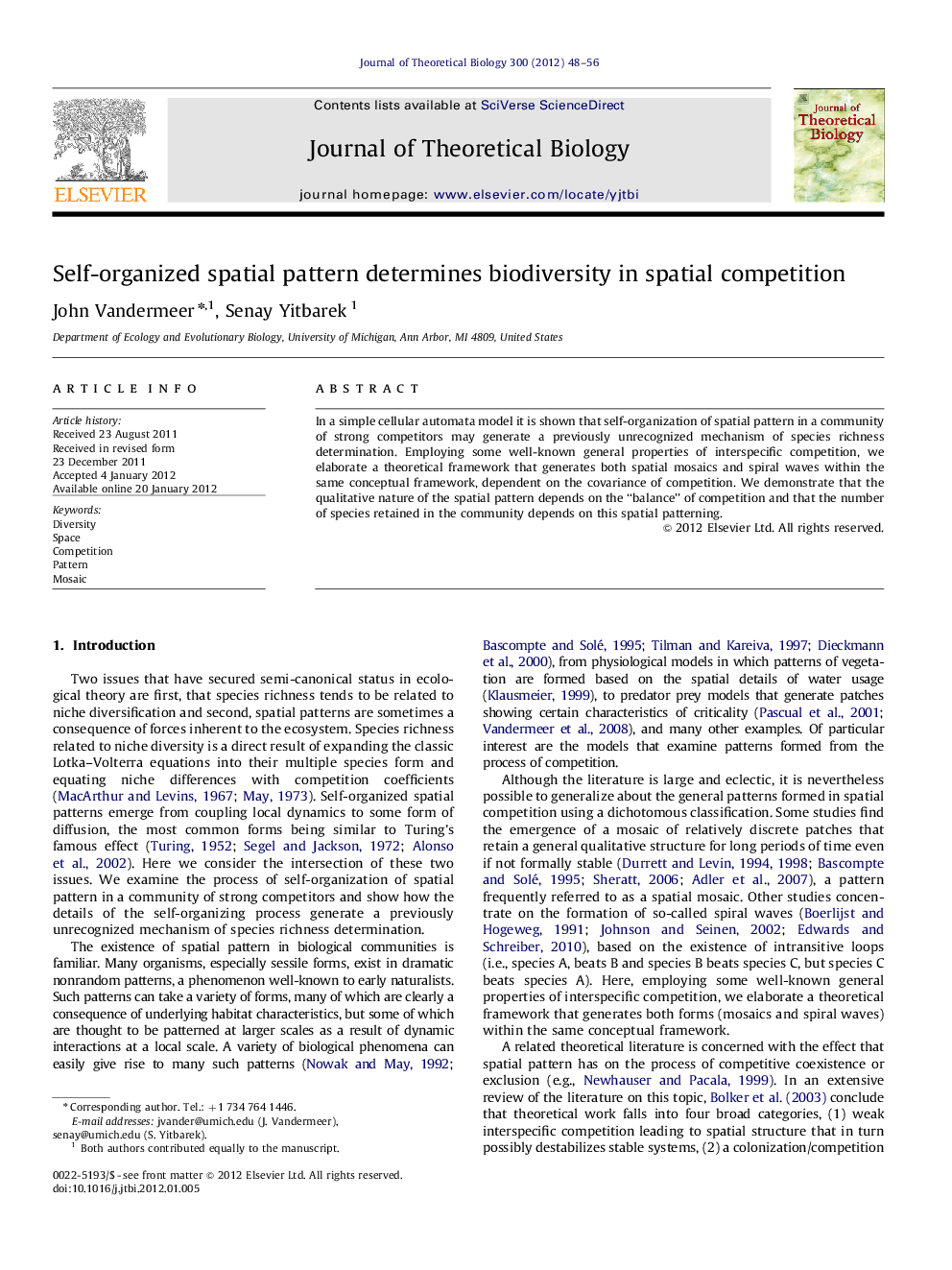| Article ID | Journal | Published Year | Pages | File Type |
|---|---|---|---|---|
| 4496750 | Journal of Theoretical Biology | 2012 | 9 Pages |
In a simple cellular automata model it is shown that self-organization of spatial pattern in a community of strong competitors may generate a previously unrecognized mechanism of species richness determination. Employing some well-known general properties of interspecific competition, we elaborate a theoretical framework that generates both spatial mosaics and spiral waves within the same conceptual framework, dependent on the covariance of competition. We demonstrate that the qualitative nature of the spatial pattern depends on the “balance” of competition and that the number of species retained in the community depends on this spatial patterning.
► Autonomous formation of spatial pattern determines species richness. ► The arrangement of competition determines the pattern of species coexistence. ► In balanced competition spatial mosaics tend to form and species diversity is high. ► In unbalanced competition spiral waves tend to form and species diversity is low.
